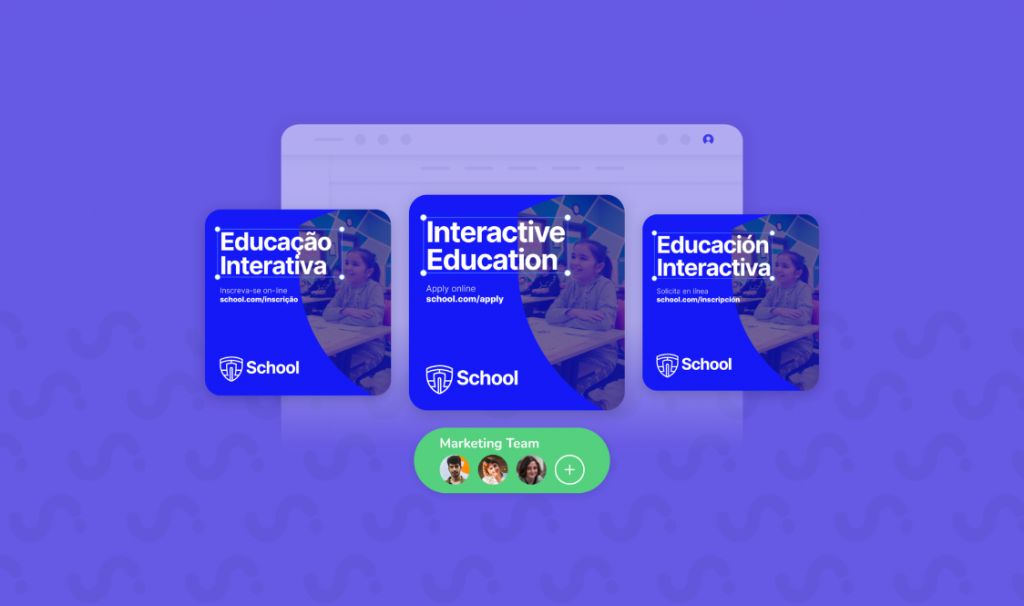Essential Guide to Multilingual Content Marketing Strategy
Multilingual content marketing is becoming a competitive field with untapped opportunities and an edge for first-mover brands. Why? Well, a growing 40% of the world’s population uses the internet today to meet daily needs of information, research, work, socialization, and shopping. On Facebook alone, while the number of English users grew by 69% from 2010 to 2012, the population of Portuguese speakers grew by 800%! The same goes for Arabic and German. This shows the dynamics associated with internet user growth. Populations from dynamic backgrounds expect to experience their interests, values, and cultural viewpoints online. According to Visual Modo, more than 50% of consumers on the internet prefer to shop goods from websites that offer information in their language. In their research, 56.2% of consumers prioritized information relayed in their language to be more important than the price of goods and services. Even more, 72.1% of consumers account for higher retention rates on websites that are localized in their language. These numbers are a lot. But what does it mean for your business?
The Concept of Multilingual Content Marketing and What it Means for Businesses
Multilingual simply means many languages. The concept of multilingual content marketing retains content marketing principles and objectives but in more than one language. According to Copyblogger,
“Content marketing means creating and sharing valuable free content to attract and convert prospects into customers and customers into repeat buyers. The type of content you share is closely related to what you sell; in other words, you’re educating people so that they know, like, and trust you enough to do business with you.”
The important keywords by order of importance here are; attract, know, like, trust, convert and repeat.
Multilingual content marketing is a strategy used to scale business through blogs, videos, social media posts, ebooks, podcasts, etc., to audiences of different languages. Keep in mind that the content design for social media should match the one for your blogs to stay on brand.
If executed well, businesses can;
Discover Marketing Localization Engine
1. Gain a Competitive Edge
The link between conversion rates of a customer presented with propositions in their localized language is very strong. Savvy marketers understand that multilingual interfaces on their websites present a huge opportunity because of the diverse customers you can reach with it. Remember, 72.1% of these customers spend more time on websites that are in their language. If your business should execute a multilingual content strategy before your competitors, you stand a better chance of increasing brand awareness which builds trust and credibility.
2. Generate Revenue and Sales
Stats according to AdParlor proves that localizing content for audiences is one easy path to increasing revenue and brand loyalty. The study on Fortune 500 companies showed a two times likelihood to ramp up profit year after year. This is because multilingual content marketing displays commitment, stability, and longevity, which dispels doubts from potential customers.
3. Trust and Retention
The backbone of content marketing is trust. You need to ‘speak your customers’ language’ using their dialect. Localizing your content not only ensures brand awareness in a wider spectrum; it creates an understanding through emotional communication. Such trust not only builds your business audience but also retains them.
Multilingual content marketing presents a lot of opportunities for businesses that implement it with effective strategies. But without an agile, simple, and cost-effective approach, localizing marketing content can prove to be complicated.
Challenges of Multilingual Content Strategy
Marketing managers face challenges that are well beyond currency differences and language translation. Nuanced factors of culture, dialects, and interpretations make multilingual content marketing seem complicated. Here are some of the common challenges it presents to businesses.
1. Challenge on Brand Messaging
With multilingual content marketing, it is challenging to maintain congruent brand messaging. Audiences in different localities have different values attached to products and services. This requires flexibility in brand messaging since you need a message that both resonates with the audience and your brand – in all interested localities. For example, cultures in most Asian countries uphold family-togetherness and homemade food. For commercial food businesses looking to expand, this will affect their marketing campaigns.
2. Challenge on Resources
Multilingual content marketing takes time and money because there is no one size fits all. You cannot just leave the work to a marketing team who is not specialized for a locality you wish to target. In fact, the best way to learn communication is by direct research with the local audience. This will take more time, brainstorming sessions, and split tests to ensure that your business will not only adapt to the new locality but also meet success in its campaigns.
3. Challenges in Branding
Multilingual content marketing affects content and vice versa. For example, different color schemes can mean other things in different countries. Muslim countries see green as a holy color, but you can’t say the same for China; it denotes infidelity. In Ireland, it means good luck. Red in places like China and Korea is part of color themes for luck but may signify danger in others. Changes in characters, such as Non-Latin scripts, can also affect the orientation and layout of designs. Again, affecting the structure of creating marketing materials. The challenge here is to ensure that marketing materials are correct and current at all times. Most often, it requires reshooting ads, promotional videos, and redesigning banners, to properly represent messages that will stick with your audience as well as address market-specific differences.
4. Lack of Infrastructure and Tools
Multilingual content marketing is pretty much an emerging field, and there are only a few tools to support the unique demands for a dynamic content strategy. However, it is no setback because we constantly learn and provide dynamic solutions for multilingual content marketing and localization needs.
Everything you Need to Know About Strategy
Deciphering the challenges in multilingual content strategy can be a hassle, but the results are rewarding. Consistent representation of brand messaging across different locales can guarantee market expansion and an increase in revenue. Here are step-by-step strategies on how to start localizing your brand.
Discover Marketing Localization Engine
1. Understand your Core Message
Implementing multilingual content marketing is something you can only get right from the start. You must have a core message to properly adapt your marketing to a new target market. You should have consistent content on your blogs, social media channels, and other media outlets. Having a solid core message will ensure that you do not stray off the guard rails when you need to adapt content.
2. Researching the Audience
You need to research your new market if you want to communicate values better and position your brand in a new target market. The research goes beyond just language. Preferences, jargon, dialects, values, and culture will help you understand your target audience’s pain points and equip your marketing team with relevant data they can use in developing a campaign.
3. Creating or Localizing Already Existing Content
This is the bulk of the work. Businesses can choose to create new content or translate already existing content and make sure they pass an emotive message in that locality. A huge disconnect exists between translating words and translating meaning. Brands struggle with translating content to relay messages in the audience’s localized tone and voice. They also struggle with maintaining their brand perception and message, which makes multilingual content marketing all about finding that delicate balance between being compelling and being understood. Make sure the source can be localized; otherwise, content needs to be created from scratch, which is expensive and time-consuming. Understand the source and identify when it’s ok to translate and when it’s a must to localize. Address market-specific differences, e.g., holidays, cultural attributes to symbols, colors, etc.
4. Multilingual Glossaries and Style Guides
After proper research, you can find the company and industry terms or phrases, abbreviations, commonly used terms, and forbidden terms that will form the brand’s glossary and style guide structure. Glossaries contain the approved translations for each localization project or campaign. It saves time, ensures consistency, and gives teams a single reference when translating campaigns. While creating a multilingual glossary can take time to create in the beginning process, it is a valuable resource for any localization project. It tells you what the terms mean, how to translate them, and whether or not they should be kept in English. You can also ensure that all content is created according to brand values at all times using Brand Guidelines Enforcer.
5. Global SEO and Marketing Channels
Search terms change from language to language. This will affect headlines, captions, hashtags, and more deeper changes into the technical side of things. The right SEO strategy will most likely affect the structure of every other content produced. So, endeavor to make it part of the research process. This will make it easier to adapt your brand’s core message across all languages and localities and ensure a streamlined workflow.
6. Keep Everything Organized
With different terminologies, style guides, color palettes, and marketing channels, organizing assets is unavoidable. Multilingual blogs, emails, newsletters, social media content, outbound links, inbound links, and segmentation can be organized using a Digital Asset Management system. This helps internal teams collaborate with all organization’s assets from a centralized location to create and maintain content frameworks that ensure a good end-user experience.
7. Right Tools
Using the right tools to manage all your translations in one place is vital. The right CAT (Computer-Assisted Translation) and TMS (Translation Management System) tools will help coordinate your team of project managers, designers, editors, and translators to increase translation accuracy and speed up content production. One of the essential features to look for is the ability to create workflows. More content means more translation projects. A system that automates some of the processes involved in managing translation enables scalability no matter how much content a business produces.
Multilingual Content Marketing is a Walk in the Park with Desygner’s Marketing Localization Engine
At the core of producing localized content is coordination. You need to be able to manage changes across every content. You also need to coordinate vendors, translators, editors, content creators, designers, social media managers, community managers, and other stakeholders. It becomes more complex because most of these teams are located in different parts of the world. Hence, you need the right tool to solidify your strategy by keeping things simple, efficient, and easy for teams. Desygner’s Marketing Localization Engine is designed to streamline this process, and here is how.
Structured AI Support for Campaigns
You can easily set up campaign structures for multilingual campaigns. By indicating your organization’s requirements and creating a set of templates to be used for campaigns, the AI tailors the content for your users to ensure you maintain the campaign goal across every locality. You can also set up as many sub-workspaces as needed to localize your content automatically.
Automated Customization
Personalized multilingual content speaks to the needs of your target audience, but with a multilingual strategy, it is a hassle to personalize content for every audience segment. Desygner’s Marketing Localization Engine uses AI to automate the personalization of tagged texts, images, fonts, and icons. All you need to do is properly tag the regional assets or individual libraries, and the campaigns will be created as drafts, waiting for your review before publishing.
AI Learning to Improve your Campaigns
Our Marketing Localization Engine is one of the best in the market because it is an all-in-one solution. Campaign changes are recorded to further improve future campaigns. If any changes are made, the Marketing Localization Engine will easily offer options to implement the change across all materials. While you can use the machine translation feature, which creates and improves its memory of repeated words, you can integrate other 3rd party CAT tools. Even more, its content management and Digital Asset Management feature helps to create a content framework that can be managed and accessed from a centralized location which enables you to have everything in one place as opposed to multiple stand-alone tools that slow down operations.
Request a Demo
Desygner’s Marketing Localization Engine supports organizations that want to solidify their multilingual content strategy and establish a global presence. Join our clients by requesting a demo so we can better understand your unique needs and expectations.











